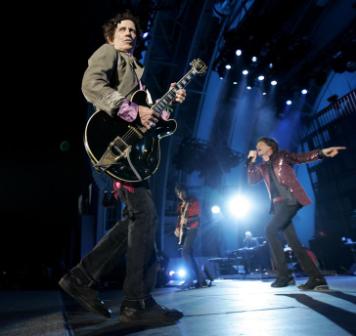The Rolling Stones are more than just a group—they are a way of life — Andrew Loog Oldham, 1964
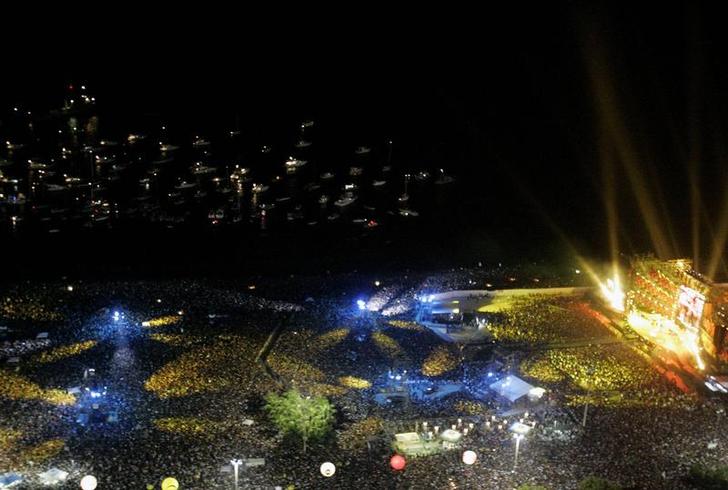
The Rolling Stones changed my life.
• I saw them 309 times in 38 countries, 29 U.S. states, and 5 Canadian provinces between September 1989 (East Troy, Wis.) and July 2024 (Ridgedale, Mo).
• I moved to America in 1992 to be closer at hand for future tours.
• Perhaps most importantly, I met a Brazilian girl when the Stones played a free show on Copacabana beach in 2006. We got married later that year in snowy Vancouver, hours before the final North American show of their Bigger Bang world tour. Two Stones fans, from Norway and Japan, served as witnesses. My wife, oddly, is not as enthusiastic about the Stones.
I started obsessing about Mick & Co. when I was 13. Everyone at my New Zealand boarding school was into the Rolling Stones. In a regimented system whose absurd rules and traditions dated back to the early years of Queen Victoria’s reign, we looked to the Stones as our rebellious role models. They gave me hope that I too could break out of my dull, provincial existence just as they did in the early ’60s. They were dangerous and dirty, as was their music. Largely eschewing George Martin-style studio trickery, the Stones have never sounded outdated. “(I Can’t Get No) Satisfaction” and “Jumpin’ Jack Flash” leap out of the radio today still fresh and raw after almost 50 years.
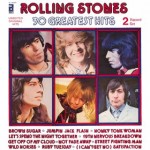 I became an obsessive collector of Stones knowledge, memorabilia and recordings. But in the days before compact disc it wasn’t easy getting hold of their cassettes. The early recordings were out of print, and I had little money to buy their more recent releases. I started with 30 Greatest Hits
I became an obsessive collector of Stones knowledge, memorabilia and recordings. But in the days before compact disc it wasn’t easy getting hold of their cassettes. The early recordings were out of print, and I had little money to buy their more recent releases. I started with 30 Greatest Hits (pictured) for my 14th birthday in the fall of 1982, and was given the newly released live album Still Life
for Christmas. A few months later, I had saved enough to buy another live album, Love You Live
, primarily because it was a double cassette priced as a single. The highlight of 1983 was rushing to buy Undercover
on its first day of sale because I was worried it would sell out (that turned out to be not a problem), and spending weeks around exam time analyzing the socio-political lyrics. I also wrote to radio stations to ask them to play more Stones, and pestered record-store clerks to display the albums properly.
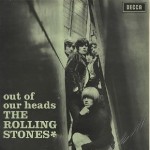 As my collection increased, some favorites rose to the top of the playlist, among them the UK version of Out of Our Heads
As my collection increased, some favorites rose to the top of the playlist, among them the UK version of Out of Our Heads, Get Yer Ya-Ya’s Out!
, Tattoo You
, and songs such as Stray Cat Blues
, Midnight Rambler
, and Sway
.
As happy as the Rolling Stones had made me during my teen years, they also left me anxious. I was worried that I would die without seeing them in person. The Stones had not visited New Zealand since 1973—when I was four. (See also The Rolling Stones in New Zealand 1964-65.) Each new year brought breathless rumors of a tour, and inevitable disappointment. Time was running out. They were hitting their 40s and getting old! A feud between Mick and Keith essentially broke the band up by 1986, and they pursued solo endeavors while slagging each other off in the press.
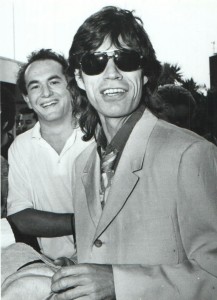
My first live experience was pretty weak in hindsight, but absolutely momentous at the time: I flew to Sydney in 1988 to see a pair of shows on Mick’s solo tour of Australia. He sported a mullet and played a bunch of Stones tunes with a Keith lookalike on guitar who was banging the hottie keyboardist. It was good enough for me, and a rare opportunity to see Mick play some solo tunes. A few weeks later, he flew to New Zealand for a show at Auckland’s Western Springs speedway, his first visit to the country in 15 years. It was big national news. Like the hoi polloi, he had to clear customs and brave the airport arrivals area where a mob of fans and journalists (including me, see photo) awaited him. He cut short an impromptu news conference after I dared ask what he thought of Keith’s debut solo album. “I haven’t heard it yet. I’m hoping he’ll send me a review copy. Bye!” The next day at a reception, his consigliere scolded me for my impertinence and said I had been blacklisted. As Mick was leaving the party, he shook my hand and said, “I remember you from the airport.”
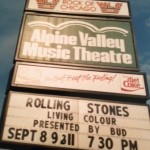
Fortunately Mick and Keith wised up in 1989, and the Stones reunited for the Steel Wheels tour of North America. It was my first—and maybe last?—chance to see them. I saved like a bastard for the expensive flight from New Zealand, and found myself at a Ramada in Milwaukee on Sept. 8, renting a car to take me to the first of three shows at Alpine Valley, a scenic amphitheater 40 miles away. I had never driven in America before, never driven on the right hand side, never driven an automatic. But I made it to the venue with plenty of time to watch the opening act, Living Colour, barely able to contain my frustration as their set dragged on. (I have since become a fan of Living Colour.)
The Stones eventually hit the stage behind a fiery wall of flash pot pyrotechnics as Keith launched into the opening riff of “Start Me Up.” It was without doubt the most electrifying, emotional moment of my life. The guys I had obsessed about for the past seven years were 15 rows in front of me, in living color. They were loud and relentless, and the Midwestern audience was nuts. We danced, sang and got sweaty as hell while the Stones powered through 27 songs spanning all phases of their career. I saw the other two shows at Alpine Valley (where Stevie Ray Vaughan died in a helicopter crash 50 weeks later), and caught their St. Louis stop before heading back to New Zealand armed with dozens of concert t-shirts to wear proudly around town.
The following year, I followed the Rolling Stones around Europe for nine shows on the Urban Jungle leg, slumming in youth hostels and railway stations. Not even a nasty dose of food poisoning could keep me from the shows in freshly unified Berlin, although I was too weak to stand or cheer. Europe was great because the shows were held in fields, and I got there in plenty of time to stake out positions near the front of the stage. So what if I was almost crushed to death some times? “Midnight Rambler” was always intense, bluesy and threatening and hyperkinetic. During a show in Sweden, I was so moved by the song that I inadvertently started beating the guy in front of me. Like all good Scandinavians, he was too stoic or polite to do anything about it.
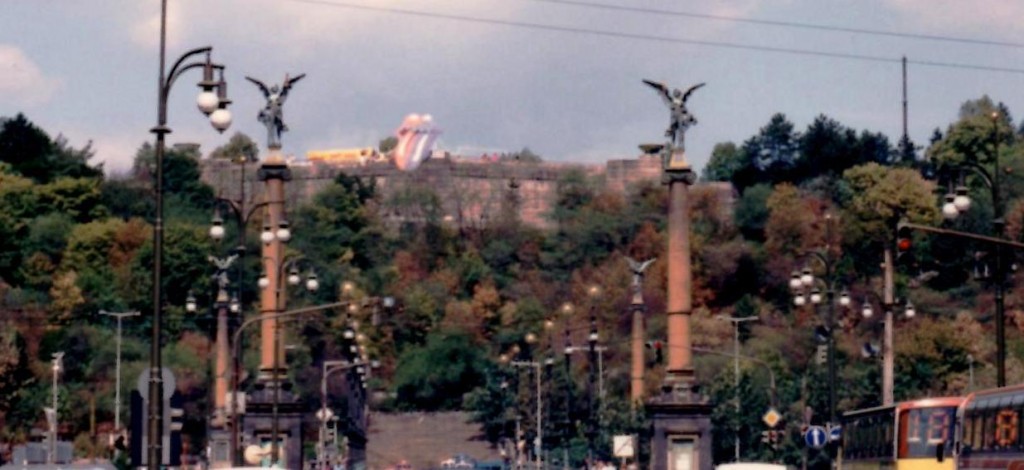
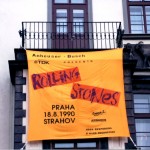
My final stop on that tour was in Prague, and it was one of my most memorable Stones experiences. Nine months after the wall fell, a wonderful sense of freedom and revolution hung in the air. It felt like a longform music video to “Street Fighting Man.” Some vestiges of the communist era remained. I had to exchange a certain amount of money every day at a lousy rate, and I was in a hostel with students from Mozambique and Angola. This was before Prague became a shitty version of Paris. Memorials to martyrs were everywhere along the main drag, and candles burned for Jan Palach, the university student who committed suicide by self-immolation in protest against the 1968 Soviet invasion. All of that is gone now. Monuments to the Stones were also everywhere. Posters declared, “Tanks are rolling out, the Stones are rolling in.” A huge Stones tongue overlooked the city from a hilltop communist column (see picture above). The show took place at one of the biggest stadiums in the world. Among the 100,000 fans was Vaclav Havel, the hero of the Velvet Revolution.
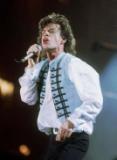 And that was it until 1994 when I was living in America and easily managed two-dozen stops on the Voodoo Lounge
And that was it until 1994 when I was living in America and easily managed two-dozen stops on the Voodoo Lounge tour. But my interview requests went nowhere. I never got a straight answer, but I wondered if I was still on the blacklist. The Stones organization, burdened by layers of Kremlinesque bureaucracy, can be vindictive. Each bandmate has his own team of handlers who compete with each other for supremacy.
After much lobbying, I was granted an audience with Mick in Chicago on the eve of the Rolling Stones’ Bridges To Babylon tour in 1997. He was impressed when I told him I had seen about 36 Stones shows, and hopefully my nerdy questions were more interesting for him than the clichés tossed at him by my journalistic brethren—How do you find the energy? Will this be the last tour? Still, I felt more deflated than elated afterwards when I realized that nothing else in life would ever have the same import. A year later, I spoke on the phone in separate interviews with Mick and Keith. They had a ghastly new live album to promote, No Security. Keith told me that Mick should focus on singing and leave him (Keith) in charge of the band. Mick said that Keith doesn’t really like people. I duly recounted these comments in my article, and was accused of rehashing ill will from the mid-’80s feud. Mick and Keith were again placed off-limits, but I interviewed Charlie and Ronnie for solo projects years later.
The concerts piled up, though. Perhaps my favorite tour was the No Security outing in 1999. The North American leg took them to arenas in out-there towns like Fargo and Sacramento, and they dusted off old tunes like “Some Girls,” “Star Star” and “Heart of Stone.” The European leg was 10 shows in six countries, and I did the whole lot, including a rare club gig at Shepherd’s Bush in London.
I saw my 100th show at Anaheim in 2002, and went into overdrive for the Bigger Bang tour of 2005-2007. I flew from L.A. to Milan for the day in 2006, and headed to and from Europe for shows on four consecutive weekends in 2007. I reviewed most of them in excruciating detail for aforementioned Norwegian buddy Bjørnulf’s semi-official fan site, IORR. Some shows were better than others. The Hollywood Bowl shows (pictured above) in 2005 were extraordinary. Tom Hanks sat behind me at one of them, screaming like a 12-year-old girl. I’ve dug him ever since. Mick was on fire in Las Vegas, hours after his father died in 2006.
As great as the shows were, I especially enjoyed the comraderie among my Stones friends—many of whom were far nuttier than I was. If an article about the Stones appeared in the paper, one pal kept the entire edition for his archive. I met a chap on the 1999 European tour who was an observant Jew and thus missed out on a bunch of Friday and Saturday shows. Some got the Stones to sign their passports, although one fellow got his confiscated at border control when he returned home. Many left their wives or significant others home alone for long stretches. A Finnish wife allowed her husband to hit the road as long as he bought her a new washing machine. A Hungarian fan kept delaying his medical studies because of the Stones. A noted British collector has held on to a large, black trash bag—rotting trash included—since 2002 because it is emblazoned with the Stones’ tongue logo.
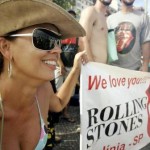 A dedicated handful insisted on staking out the Stones’ hotels at all hours in hopes of a glimpse. I didn’t see the point of that. I knew what they looked like and I could see them on stage. I preferred to sightsee the hell out of the exotic cities and countries to which the Stones were luring me: Estonia, Montenegro, Japan, Rio de Janeiro, Buenos Aires, Shanghai, Portugal, Romania, and so on. The shows were almost like the nightcap after a busy day of war museums, art galleries and brewery tours. After the shows, my friends and I would often gather for a beer to deliver our extremely nerdy verdicts about the on-stage developments.
A dedicated handful insisted on staking out the Stones’ hotels at all hours in hopes of a glimpse. I didn’t see the point of that. I knew what they looked like and I could see them on stage. I preferred to sightsee the hell out of the exotic cities and countries to which the Stones were luring me: Estonia, Montenegro, Japan, Rio de Janeiro, Buenos Aires, Shanghai, Portugal, Romania, and so on. The shows were almost like the nightcap after a busy day of war museums, art galleries and brewery tours. After the shows, my friends and I would often gather for a beer to deliver our extremely nerdy verdicts about the on-stage developments.
After the 2007 tour ended in London, I was at 199 shows and perfectly content to leave it at that. I reasoned that Mick could keep playing forever but Keith was in bad shape. Despite my skepticism, they returned to the road in late 2012 for six dates in London and New York tied in with their 50th anniversary. Even though Mick lives in real time and likes his band to be considered a going concern rather than a nostalgia act one degree removed from county fairs, the lucre was too hard to turn down. They charged upwards of $753 for fans to watch them play old favorites like “Miss You” and “It’s Only Rock ‘n Roll.” They did trim their on-stage posse of backing singers and musicians, but more fat remains to be cut.
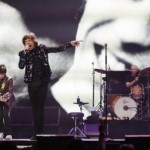 I saw just one of the shows, the one in Brooklyn where Mary J. Blige did an excellent “Gimme Shelter” with Mick. I covered the show for Brazilian newspaper Folha de Sao Paulo, almost breaking even after paying top dollar to get in. I never thought I’d be grumpy about attending a Rolling Stones concert, especially my 200th, as I wrote in a separate review for the IORR fan site.
I saw just one of the shows, the one in Brooklyn where Mary J. Blige did an excellent “Gimme Shelter” with Mick. I covered the show for Brazilian newspaper Folha de Sao Paulo, almost breaking even after paying top dollar to get in. I never thought I’d be grumpy about attending a Rolling Stones concert, especially my 200th, as I wrote in a separate review for the IORR fan site.
Inevitably the Rolling Stones were back in April 2013 for an extended swing through North American arenas. Conveniently for me, they rehearsed near my house in Los Angeles. California, in fact, hosted seven of the 19 dates and I saw five of them, including the club gig at the Echoplex near Hollywood where tickets were just $20.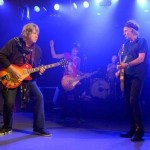 I stood next to the Olsen twins in the VIP section in front of the stage, and chatted backstage with former Rolling Stone Mick Taylor who was a guest on at least one or two songs every night. Here’s my story for Brazil’s Folha.
I stood next to the Olsen twins in the VIP section in front of the stage, and chatted backstage with former Rolling Stone Mick Taylor who was a guest on at least one or two songs every night. Here’s my story for Brazil’s Folha.
For the rest of the tour, where all the loge and floor seats were sold at $650, a bunch of randomly allocated lucky-dip tickets were sold “cheaply” at $85 with the slight chance that buyers might end up in the pit in front of the stage. Most were nosebleeds, however. My thoughts on the official opener at the Staples Center? “Great show, but absolutely no reason to pay more than $85 for a seat. Of course some fans will be happy to fork out megabucks for a guaranteed spot in the pit or front sections. But since this tour is just a continuation of the past few tours, with a few new wrinkles here and there, the $85 lottery is the recommended way to go.”
As usual “Midnight Rambler” was the nightly highlight, and relative rarities such as “Factory Girl,” “Little Red Rooster” (with Tom Waits in Oakland), and “Far Away Eyes” were much appreciated. “Emotional Rescue,” played for the first time ever, was a thrill—though ingrates might argue that two disco songs in one night is two too many. While Mick and Keith didn’t seem particularly warm towards each other, I got to catch up with my Stones friends from around the world. I’d missed them. However, the terrible pricing policy meant that I did not travel out of California to see any of the other shows.
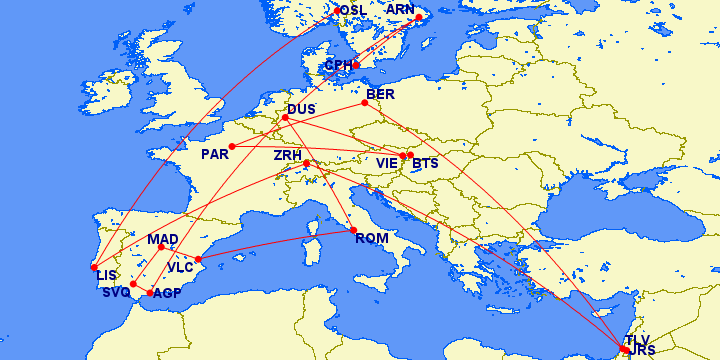
I was more motivated in the summer of 2014, doing 12 of the 14 shows on their European tour (opting to skip the messy festival stops in the Netherlands and Belgium so that I could wander around a bit more in Israel and Spain, respectively). After South America, Europe is the place to see the Stones, preferably in an excitable country like Spain. Each show is a holy communion where tens of thousands of the faithful have happily drunk too much wine, literally or spiritually. Mick and Keith seemed on much better terms, their performances lifted a few notches by the rapturous crowds. And in November, I saw the Stones for the first time in decidedly low-key New Zealand, cashing in some frequent-flier miles at the last minute for a rare visit. After more than 30 years I had come full circle.
###
NOTE: Completely unrelated to the above story, my gossipy rock bio Strange Days: The Adventures of a Grumpy Rock ‘n’ Roll Journalist in Los Angeles is available here. For more info, go to strangedaysbook.com
Copyright © 2015-2021 by Dean Goodman. PLEASE DO NOT CUT AND PASTE THE WHOLE THING
